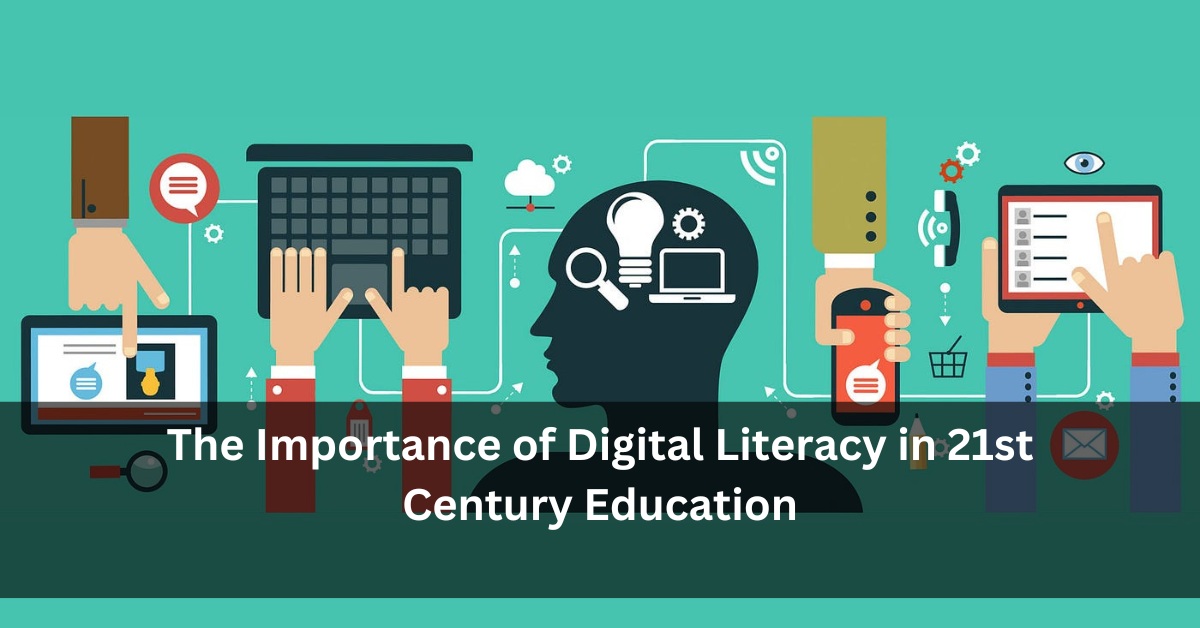The Importance of Digital Literacy in 21st Century Education
Why Digital Skills Are a Must-Have for Every Indian Student Today
In today’s fast-changing world, using digital devices and the internet has become part of our daily life. From schools to workplaces, almost everything is now online. But just using a phone or computer is not enough. To succeed in the 21st century, students need to understand how to use technology wisely. This is where digital literacy becomes important.
Digital literacy is not just about knowing how to use a computer. It’s about understanding how to find, use, and share information safely and smartly. In this blog from Bloggers Hub, we will explain why digital literacy is the key to modern education, how India is working on it, and how students can benefit from it.
What Is Digital Literacy?
Digital literacy means having the skills to use digital devices like computers, smartphones, tablets, and the internet to learn, work, and communicate.
It includes:
- Browsing websites and finding correct information
- Using apps for learning and communication
- Staying safe online and protecting your privacy
- Understanding fake news and harmful content
- Creating simple digital content like posters, videos, or documents
Just like learning to read and write is important, learning to use technology correctly is now part of basic education.
Why Is Digital Literacy So Important in Education?
1. It Makes Learning Easier and More Fun
Digital tools like educational apps, YouTube lessons, online quizzes, and e-books help students learn faster and in more interactive ways. They can pause and replay lessons, practice at their own pace, and even join live classes from their homes.
2. It Connects Students to the World
With internet access, students in rural villages can watch lectures from top professors, attend virtual workshops, or take online courses from IITs and foreign universities — all from their smartphones.
3. It Prepares Them for Jobs of the Future
Most jobs today need some level of digital skill. From bank clerks to engineers and even shopkeepers, everyone needs to use digital payments, emails, or software. Students who are digitally literate will have better chances at jobs in the future.
4. It Keeps Students Safe Online
There are many dangers online — cyberbullying, scams, fake news, and viruses. When students are taught digital literacy, they learn how to protect themselves and avoid risky websites and messages.
What Is India Doing to Promote Digital Literacy?
India has started many programs to make students and teachers digitally smart.
PMGDISHA (Pradhan Mantri Gramin Digital Saksharta Abhiyan)
Launched to make 6 crore people in rural areas digitally literate. Many schools have joined this mission.
Digital India Campaign
Focuses on internet access, digital tools, and online learning platforms across the country.
National Digital Library of India (NDLI)
Free access to thousands of e-books and study materials for students, teachers, and researchers.
DIKSHA Platform
The government’s e-learning app where teachers and students can find syllabus-based video lessons, worksheets, and more.
Samagra Shiksha Abhiyan
Helps schools to get computers and internet and trains teachers to use digital methods for teaching.
Real-Life Examples in India
- Rural Schools in UP and Bihar are now using tablets provided under central schemes for daily classes. Students are learning how to use Google Search and YouTube for their science and math concepts.
- Digital Saathi Programs are helping young girls and women in Haryana and Rajasthan learn how to use WhatsApp, UPI, and online health services.
- Online Olympiads and Coding Bootcamps are becoming popular even in Tier-2 cities like Indore, Ranchi, and Surat.
Challenges in Making Everyone Digitally Literate
Even with all the efforts, some challenges remain:
- No Devices: Many students still do not have access to a phone, tablet, or laptop.
- Poor Internet: In remote areas, internet speed is too slow for online classes or videos.
- Lack of Training: Teachers in many schools have not received enough training to use technology.
- Language Barrier: Most content is in English, which makes it harder for non-English speaking students.
How Can Students Improve Their Digital Skills?
Here are 5 simple tips for students and parents:
- Start with government apps like DIKSHA and NDLI for study help.
- Use Google Search smartly — try to check more than one source for the same topic.
- Watch tutorials on YouTube about typing, using Microsoft Word, or making a presentation.
- Ask your school teachers to include one digital activity every week.
- Practice using email, Google Drive, and Zoom to get ready for college or jobs.
Final Words
Digital literacy is not just a trend — it is a basic need for every student in India today. It helps in education, jobs, safety, and even day-to-day activities like online payments or filling a government form.
If we want our students to succeed in today’s world, schools, parents, and the government must work together to make digital literacy a part of every child’s learning.
Keep following Bloggers Hub for more such easy-to-understand blogs on education, tech, and student life.
Frequently Asked Questions (FAQs)
Q1. Is digital literacy only for older students?
No. Even young kids can be taught digital basics like using a keyboard, safe browsing, or educational apps.
Q2. Can I learn digital skills without going to coaching?
Yes! Many free platforms like DIKSHA, NDLI, and YouTube offer quality learning.
Q3. Will digital skills help me get a better job?
Definitely. Most employers now expect you to know basic computer and internet skills.
Q4. How can I check if a website or app is safe?
Look for “https://” in the address bar, and avoid sites with too many popups or asking for personal info.
✅ Bookmark Bloggers Hub
✅ Subscribe to our latest updates
✅ Stay ahead in school and career with simple, useful knowledge







